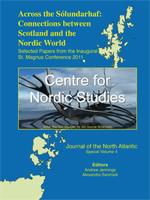How does historiography merge with national stories and shape tangible land use and land management issues? This article explores how two national stories—“The Free Norwegian Farmer” in Norway and “The Caledonian Forest” in Scotland—have become influential. More specifically, it investigates how they activate key symbols which are used as both ends and means in landscape-management policies. Using trees as a starting point, this article will show how afforestation plans on one hand and schemes to fight brushwood encroachment on the other each are direct or indirect outcomes of national stories that have merged with historical processes. National stories are defined as accounts used in the past and present to strengthen the political idea of nationhood. The term “key symbols” will be used as Sherry Ortner defined them: as elements within a culture “which ... are crucial to its distinctive organization”. This article is based on literature studies, interviews, and ethnographic fieldwork among people working in agriculture, forestry, and land management and policy in Scotland and Norway during 2001, 2004, and 2005.
BioOne.org will be down briefly for maintenance on 17 December 2024 between 18:00-22:00 Pacific Time US. We apologize for any inconvenience.
How to translate text using browser tools
1 October 2013
The Ebb and Flow of Trees and Farmland: Symbols of Nationhood in Scotland and Norway
Karen Lykke Syse
ACCESS THE FULL ARTICLE
<
Previous Article
|

Journal of the North Atlantic
Vol. 2013 • No. sp4
2012-2013
Vol. 2013 • No. sp4
2012-2013




